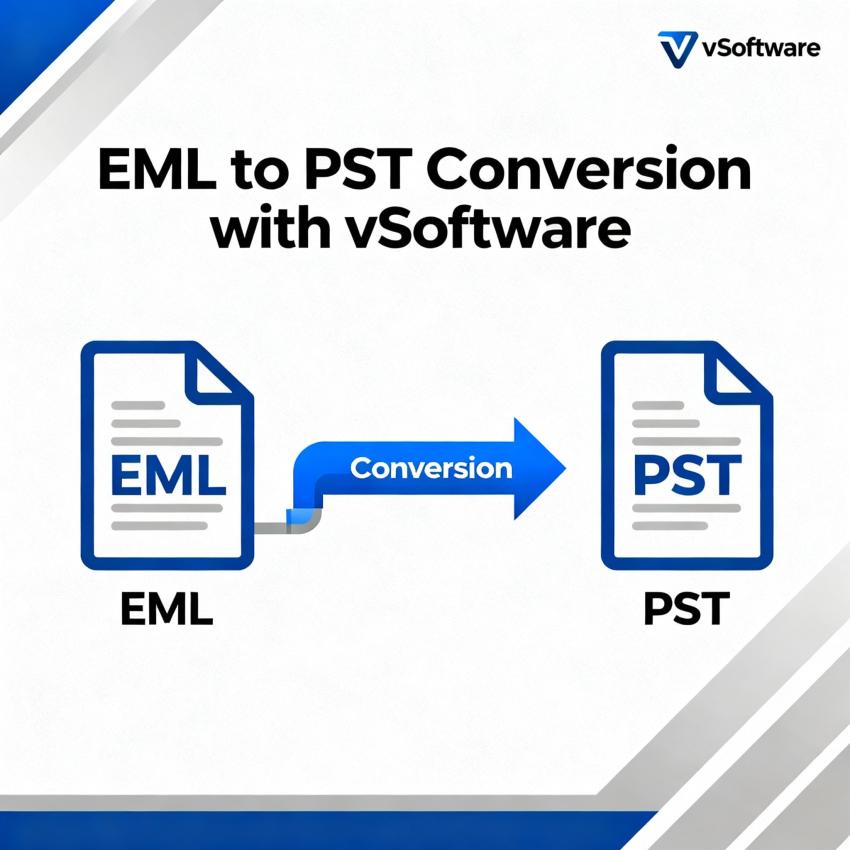
You can migrate EML files into Outlook PST via built-in workflows (drag-drop and legacy import chains) or by using an EML to PST converter software that preserves metadata, scale, and foldering reliably for IT use cases. The tool-agnostic paths work for small sets and lab scenarios, while professional software is recommended for batch jobs, integrity, and auditability at scale.
Tool-agnostic methods
Drag-and-drop into Outlook: Create a target folder in Outlook, then drag *.eml files from File Explorer into that folder; Outlook will index them immediately. This is fast but best for modest volumes and may not preserve all headers/attachments consistently in bulk.
Outlook Express/Windows Mail relay (legacy): Historical workflows used Windows Live Mail/Outlook Express to ingest EML and export into Outlook, then save as PST via Outlook’s Export, but these utilities are deprecated and unsupported since 2014; avoid for production.
When to choose software
Use professional EML to PST converter software when you need bulk ingestion, folder hierarchy preservation, de-duplication, MIME/attachment fidelity, selective conversion, and consistent logging—especially for multi-GB archives or compliance workflows. Software-led approaches typically support folder selection, preview, filtering, PST splitting, and direct PST output for import to Outlook.
Prerequisites and environment
Workstation with Outlook installed for final PST validation and import.
Staging disk with adequate free space for extracted EML and resultant PST files (consider 1.2–1.5× source size during processing).
For Exchange/365 mailboxes, PST import requires Outlook’s Import/Export wizard or Exchange-side workflows; mailbox export cmdlets are for mailbox-to-PST, not EML-to-PST, but are useful post-conversion validation steps.
Step-by-step: manual workflows first
Drag-drop EML into Outlook
In Outlook, create a new local folder under the desired PST or Mailbox store.
Select EML files in File Explorer and drag them into the Outlook folder; verify message openability and headers.
Limitations: inconsistent bulk behavior, attachment send limits, and no automation across deep folder trees.
Legacy relay (avoid for production)
Historical guides route EML via Windows Live Mail/Outlook Express, then into Outlook, but these components are obsolete and unsupported; use only for lab reproduction, not enterprise migration.
Import the final PST into Outlook
In Outlook: File > Open & Export > Import/Export > Import from another program or file > Outlook Data File (.pst) > Browse to PST > choose destination folder > Finish.
Validate item counts, sample headers, and attachments after import.
Professional software workflow (recommended)
Most enterprise-grade EML to PST converter tools follow a standard flow that is predictable and scriptable:
Install the EML to PST converter on a staging workstation.
Add source: point to file(s) or root folder with nested EML; tools enumerate and preview items.
Map output: choose PST as the target, set destination path, enable PST split thresholds (e.g., 10–20 GB), and apply date/sender/subject filters as needed.
Start conversion: the tool writes PST(s), maintaining folder hierarchy and MIME fidelity.
Import PST into Outlook using Import/Export or attach PST directly, then verify.
Typical capabilities to look for
Batch folder ingest, recursion, and large set handling.
Filters by date, from/to, subject, size; exclude duplicates.
PST splitting to keep files under operational thresholds.
Logs/reports for audit and chain-of-custody documentation.
Exchange and Microsoft 365 context
New-MailboxExportRequest: Exchange on-prem cmdlet to export a mailbox to PST, not applicable to raw EML input; useful if you decide to ingest into a mailbox first and then export. Requires assigning the Mailbox Import Export role and a UNC share path for PST.
Prereqs: assign the role, create a shared folder (UNC), and run export requests; this is mailbox-centric, not a direct EML conversion route.
Validation and QA checklist
Sample-open EML in Outlook post-conversion; confirm body format (HTML/plain), inline images, and attachments.
Spot-check header fidelity (From, To, Cc, Bcc, Date, Message-ID) and folder mapping.
Cross-check counts per folder between the source tree and the PST root; confirm split PSTs import cleanly.
Risks and edge cases
Deprecated relays: Windows Live Mail/Outlook Express routes are unsupported and risky for data integrity; avoid.
Drag-drop limits: Bulk drag may hang, drop attachments, or flatten metadata; use only for small sets.
Very large PSTs: Keep under size thresholds and split as needed to reduce corruption risk and improve portability.
Shortlist: EML to PST converter software
The market offers multiple utilities with similar operational models; look for batch handling, hierarchy preservation, filtering, PST split, reporting, and broad Outlook version support. Representative examples and their typical flows:
vMail EML to PST Converter: add EML, preview, set conversion rules, save to PST; focuses on integrity and version coverage.
CubexSoft EML to PST: select files/folders, preview, export to PST with split and filters; supports batch conversion.
Note: Brand-specific UIs differ, but steps are materially the same: add source EML tree, configure PST output and rules, run conversion, and import PST into Outlook. Select tools that document logging and preserve MIME structure for auditability.
Post-migration operations
Outlook import: Use Import/Export wizard or attach PST for immediate access; confirm search index completion.
Exchange mailbox export (optional): If items were first placed into a mailbox, you can export to PST via New-MailboxExportRequest for standardized archiving; ensure role assignment and UNC share permissions.
Quick start template (software-led)
Prepare: Collect EML root folder and estimate total size; plan PST split at 10–20 GB.
Convert: Load the EML folder in the converter, apply filters, enable split, and export to PST.
Import: In Outlook, Import/Export > Import .pst into target profile/folders; validate sample items.
Document: Save logs/reports from the converter and record item counts for your change ticket.
This approach gives you a reliable, auditable EML-to-PST path with minimal manual error, while preserving headers, attachments, and foldering required in enterprise support contexts.




